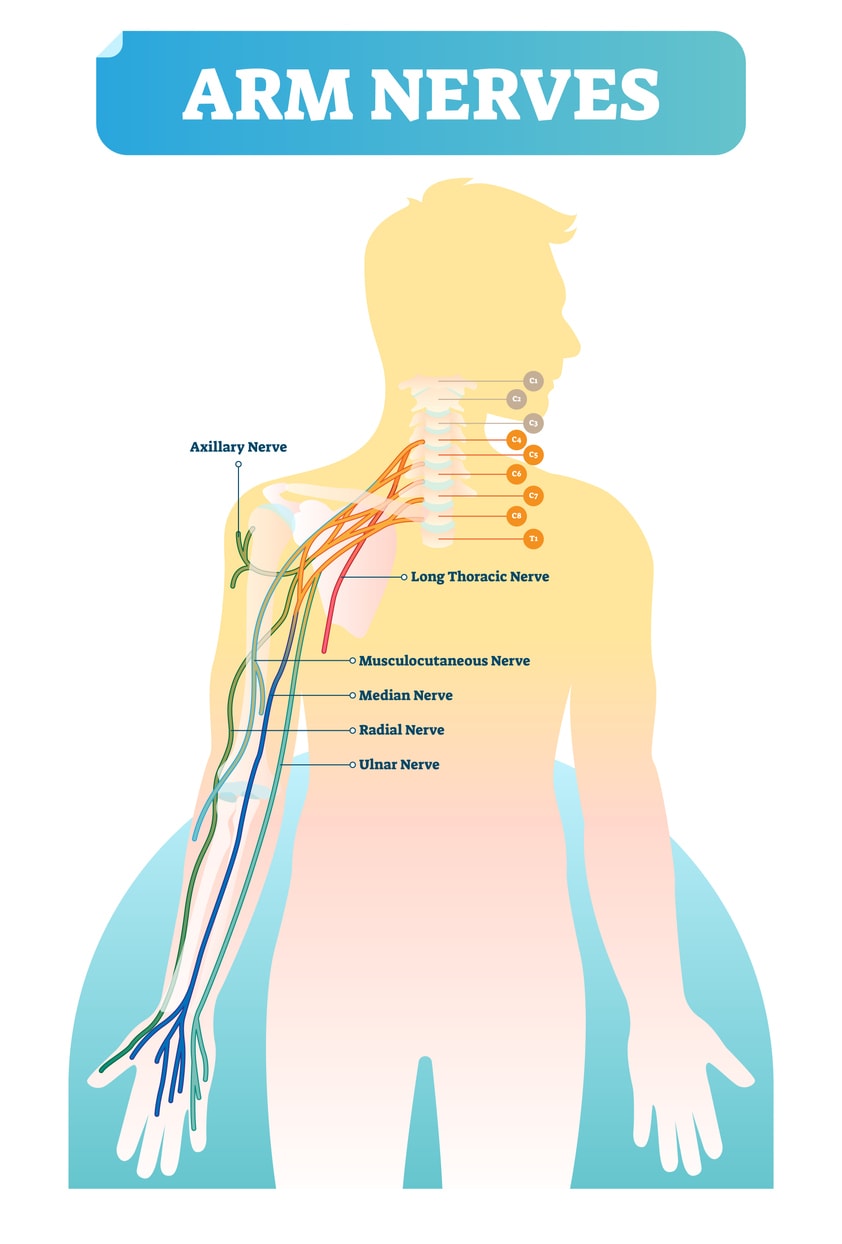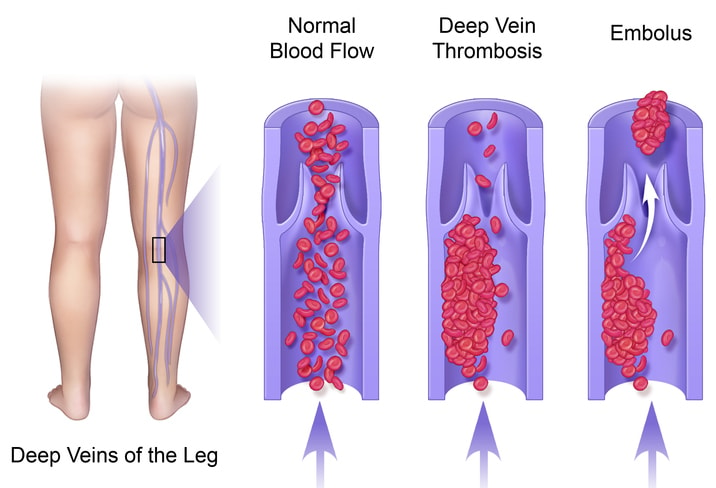Considering brachioplasty (Arm lift)? Learn about the potential brachioplasty complications, like scarring, infections, and nerve damage. This guide prepares you for the risks and helps you make informed decisions.
Key Takeaways
- Brachioplasty comes with risks like scarring, infections, and nerve damage; understanding these can help in preparing for the procedure.
- Scarring is common, so managing it post-surgery with compression garments and following care instructions is key to achieving the best results.
- Choosing a qualified, board-certified plastic surgeon is crucial for a successful brachioplasty and reducing complications.
Common Complications of Brachioplasty

Disclaimer: Operation performed by Dr Bernard Beldholm. Adult content, surgery has risks; individual results vary, seek 2nd opinion. Please see the full disclaimer.
Book your appointment online now
Like any surgical procedure, brachioplasty comes with its own set of risks. One of the most common complications is scarring, which can vary in severity from patient to patient. While some may experience minor, almost unnoticeable scars, others may develop hypertrophic or keloid scars that are raised and more pronounced. Additionally, infections, wound healing problems, and pain are common risks that patients must be prepared for.
Another notable complication is damage to lymphatic tissue, which can result in chronic swelling of the arm. This swelling can be severe and may even become a permanent issue. Awareness and preparation for these potential complications, including arm lift (Brachioplasty) risks, are crucial for anyone considering a brachioplasty procedure. Understanding the risks allows patients to take proactive steps to mitigate them and achieve better surgical outcomes.
Scarring Issues
Scarring is an inevitable part of brachioplasty, and it’s important to set realistic expectations. Hypertrophic scars, which are raised and red due to excess collagen, are the most frequent type of scarring seen in brachioplasty patients. These scars typically stay within the boundaries of the incision but can be quite noticeable. On the other hand, keloid scars extend beyond the original incision site and can be both itchy and painful.
Proper post-operative care plays a significant role in managing and reducing scarring. Patients should follow their surgeon’s advice on scar management to minimize the appearance of scars. This includes wearing compression garments, which help in healing. Scar maturation can take up to a year, during which the appearance of scars will gradually fade.
Typically, the scar is placed underneath the upper arm to reduce visibility. However, even with careful placement, some scarring will be visible, especially when the arms are raised. The goal is to hide the scar as much as possible while achieving the shapeliness of the upper arms.
For those specifically looking to minimise scarring, a short scar brachioplasty might be an option, although it may not be suitable for everyone.

Disclaimer: Operation performed by Dr Bernard Beldholm. Adult content, surgery has risks; individual results vary, seek 2nd opinion. Please see the full disclaimer.
Infection Risks and Prevention
Infections, though relatively rare, can occur post-brachioplasty and typically affect around 3.19% of patients. These infections can range from superficial skin infections to more severe, deeper infections that might require hospitalization. Antibiotics are administered during the surgical procedure and may be prescribed afterward to reduce the risk of infection.

Maintaining a clean and dry incision site is paramount in preventing infections. Patients should monitor for signs of infection, such as fever, increased redness, or unusual drainage from the incision, and seek medical attention promptly if any of these symptoms appear.
Adhering to these preventive measures and maintaining a healthy lifestyle can significantly reduce the risk of developing an infection post-surgery.
Seroma Formation
Seroma formation is another complication that can occur after a brachioplasty procedure. This condition involves the accumulation of excess fluid between the skin and underlying tissues, which can hinder the healing process.
To treat seromas, drainage procedures may be necessary to remove the excess fluid and promote proper wound healing. This can usually be done in clinic by Dr Beldholm. While some swelling and bruising are normal post-surgery, excessive fluid buildup should be monitored closely to prevent further complications. Monitoring these symptoms helps ensure a smoother recovery process.
Excess Skin in the Upper Arm
Excess skin after brachioplasty, commonly known as an arm lift, is a concern that patients may face as the body heals and adjusts post-surgery. While the primary goal of the procedure is to remove excess skin and fat, some residual loose skin might remain. This can occur as the body naturally begins to settle and the swelling decreases over time.
Patients should be aware that achieving tight skin is not always feasible or advisable, as overly aggressive skin removal can lead to undesirable complications such as restricted arm movement or poor scarring.

Tattoo blurred for privacy Back – Away from surgical area
Disclaimer: Operation performed by Dr Bernard Beldholm. Adult content, surgery has risks; individual results vary, seek 2nd opinion. Please see the full disclaimer.
Nerve Damage and Sensory Changes

Nerve damage is a potential risk in brachioplasty. The medial antebrachial cutaneous nerve is the most commonly affected, leading to symptoms such as numbness, tingling, and even muscle weakness. In some cases, nerve damage can result in temporary or permanent sensory changes in the arm.
Treatment for nerve damage may include nerve blocks, steroid injections, or surgical decompression. While chronic nerve damage is uncommon, it’s important for surgeons to be cautious with incision placement and have a thorough understanding of arm anatomy to minimise the risk.
Patients should report any unusual sensations post-surgery to their healthcare provider for appropriate management.
General Surgical Complications

Like all surgical procedures, brachioplasty carries general risks such as heart problems, lung issues, and blood clots. These complications are relatively rare but can be serious if they occur. Men, in particular, have a higher risk of developing complications compared to women. Additionally, patients undergoing combined procedures are at an increased risk of experiencing complications.
To prevent blood clots and lung complications, it’s essential for patients to incorporate movement and walking into their post-surgery routine. Staying active and following the surgeon’s advice can reduce the likelihood of these general surgical complications and promote a smoother recovery.
Factors Increasing Risk of Complications
Several factors can increase the risk of complications during and after brachioplasty. Smoking is a significant risk factor, as it can impair wound healing and increase the likelihood of infection. Patients are advised to adopt a nicotine-free lifestyle prior to surgery to minimise these risks.
Obesity is another common risk factor, as a high BMI can lead to complications related to wound healing and overall recovery, particularly when there is excess fat. Older age and medical conditions such as diabetes also contribute to a higher complication rate in massive weight loss patient brachioplasty patients.
Managing Post-Surgery Discomfort

Post-surgery discomfort is a common experience for brachioplasty patients. Symptoms such as soreness, bruising, and swelling are typical and can be managed with proper care. Compression garments are often recommended to help manage swelling and support the healing process. These garments should be worn continuously for up to a month to achieve optimal results.
Pain medications prescribed by the surgeon can also alleviate discomfort during the recovery period. Following the surgeon’s post-operative care instructions and using compression garments effectively manage post-surgery discomfort and ensure a smoother recovery.
Long-Term Outcomes and Revision Surgery

While many patients are happy with the results of their brachioplasty, some may require revision surgery to achieve their goals. About 10% of patients undergo revision surgery, often due to dissatisfaction with scarring or aesthetic results. Steroid injections and laser therapy are common treatments to reduce the appearance of scars and discomfort.
If a patient is not pleased with their initial results, it’s important to discuss options with their surgeon. Communicating concerns and exploring revision surgery helps achieve the best possible long-term outcomes from a brachioplasty procedure.
Tips for Optimal Recovery

Optimal recovery from brachioplasty involves several key practices. Proper hydration and nutrition play a significant role in minimizing scarring and promoting healing. Patients should maintain a balanced diet and stay hydrated throughout the recovery period. Additionally, keeping the incision sites dry and following dressing care instructions are crucial for preventing complications.
Avoiding strenuous activities and heavy lifting for at least two to four weeks post-surgery is essential to promote healing. Patients are encouraged to take short walks every few hours to boost blood circulation and prevent blood clots. Proper rest and sleep, including sleeping with arms elevated, can also aid in reducing discomfort and swelling.
Wearing compression garments for up to six weeks and protecting scars from UV exposure are additional measures that can support recovery. Following these tips ensures a smoother and more successful recovery from a brachioplasty procedure.
Final Thoughts by Dr Beldholm

Understanding and managing the complications associated with brachioplasty is essential for achieving the best possible outcomes. From scarring and infection to nerve damage and general surgical risks, being informed and prepared can make a significant difference in your recovery journey. By following the tips for optimal recovery and choosing a qualified specialist surgeon FRACS, patients can navigate the challenges of brachioplasty and enjoy the benefits of this procedure.
Frequently Asked Questions
What are the common complications of brachioplasty?
Brachioplasty can lead to complications like scarring, infection, seroma formation, and nerve damage. It’s definitely something to keep in mind if you’re considering the procedure!
How can I minimise the risk of infection after brachioplasty?
To minimise the risk of infection after brachioplasty, keep the incision area clean and dry, and make sure to take any prescribed antibiotics. It’s all about staying on top of your care!
What should I do if I experience unusual symptoms post-surgery?
If you experience unusual symptoms like a fever, increased redness, or strange drainage from your incision, definitely reach out to your surgeon right away. It’s always better to seek medical assistance.
How can I manage post-surgery discomfort?
To manage post-surgery discomfort, make sure to wear compression garments, take any prescribed pain meds, and stick to your surgeon’s care instructions. It’ll really help you feel better!
What factors increase the risk of complications during brachioplasty?
Smoking, obesity, older age, and conditions like diabetes can all ramp up the risk of complications during brachioplasty. It’s crucial to keep these in mind if you’re considering the surgery.



